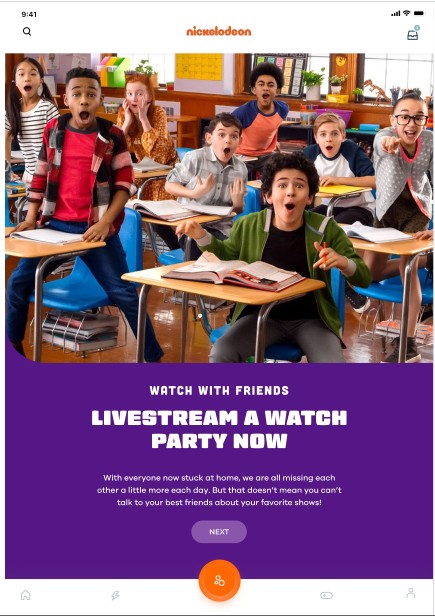By Greta Chiocchetti
Academy of Art University students are used to submitting high-quality work on tight deadlines, but last month’s Adobe Creative Jam was a new test of their creative endurance. School of Graphic Design (GR) students Hanami Itagaki, Carlos Lewis, and Julia Fernandez developed a fully-functioning prototype of a mobile tablet application in just a day and a half—from opposite ends of the globe—and finished in the top 20 of the 145 teams who participated.
“We did our best with the 48 hours we had—we kind of expected good feedback, but at the same time, there were so many students from very big universities,” said Itagaki from her home in Japan. “We were just so glad that our concept reached the judges—that’s probably the best thing that we could feel.”

The Creative Jam, which took place completely digitally, was in partnership with Nickelodeon in honor of their #KidsTogether campaign, which aims to connect kids with their friends and family through this time of social distancing. Itagaki, Lewis, and Fernandez, who called themselves “Team Karen Plankton,” submitted a colorful, fully functioning prototype that they hoped would help children engage with their community beyond simply just staring at a screen.
Completing a design sprint is challenging enough without having to coordinate with teammates in other parts of the world, but Team Karen Plankton made it work, despite the odd hours.
“With Zoom, it actually made it pretty easy. We were able to be like, ‘Okay, we’re going to do that at this time and we’re going to go for two or three hours and crank out the work,’” Lewis said. “And with everything Adobe has with XD, it makes it really easy to share files and be able to actually work on an app together at the same time while we’re all in different spots.”
Once the team received the prompt and the countdown to their looming deadline began, they dove into research. Designing an app for children was a welcome challenge and an opportunity to flex their design muscles.
“So, we knew that right off the bat that the target audience was going to be six to like, eighth grade. So what does that age group really get out of an app?” said Lewis. “What do they need? What are their user needs, wants, coulds?”
To get a sense of how their audience would interact with an app, Itagaki watched YouTube videos of children using iPads and iPhones.
“Using my senses as a designer, just looking at the users—okay, they react like this to this. Okay, they don’t really get interested in this. But they are very curious about this or they’re more comfortable using this tool or the icons that they react to,” explained Itagaki.

Although it was the students’ first experience competing in an Adobe Creative Jam, their Academy classes had already prepared them to succeed. Phil Hamlett, GR director, teaches Nature of Interaction, a class geared toward teaching students how to build digital products for mobile.
“It was funny because the 15 weeks of our interactive design class was basically like this Creative Jam within two and a half days. It’s like fast-forwarding a class,” said Fernandez. “I think it really helped that we all went through [Hamlett’s] class first because then we knew how to gear up and how we best work with different programs.”
The Academy’s relationship with Adobe gives students a competitive edge in Creative Jams and beyond—apart from having an enterprise relationship, the proximity of Adobe’s SoMa campus means that Adobe professionals can physically visit classes and offer invaluable insights.
“[Hamlett] actually invited the person who’s in charge of making Adobe XD to [our Nature of Interaction class]. So I could hear direct feedback on my app from the very person responsible,” said Itagaki.
Team Karen Plankton has a lot to be proud of, and they won’t be slowing down anytime soon.
“The group has definitely got a very high energy level. I think that they’re eager in a way that I really appreciate,” said Hamlett. “A lot of times I tell students, you should do this or that thing and then they never do it. I tell these guys, you should do this, that other thing—they do that and then come back asking for the next thing they can do.”
